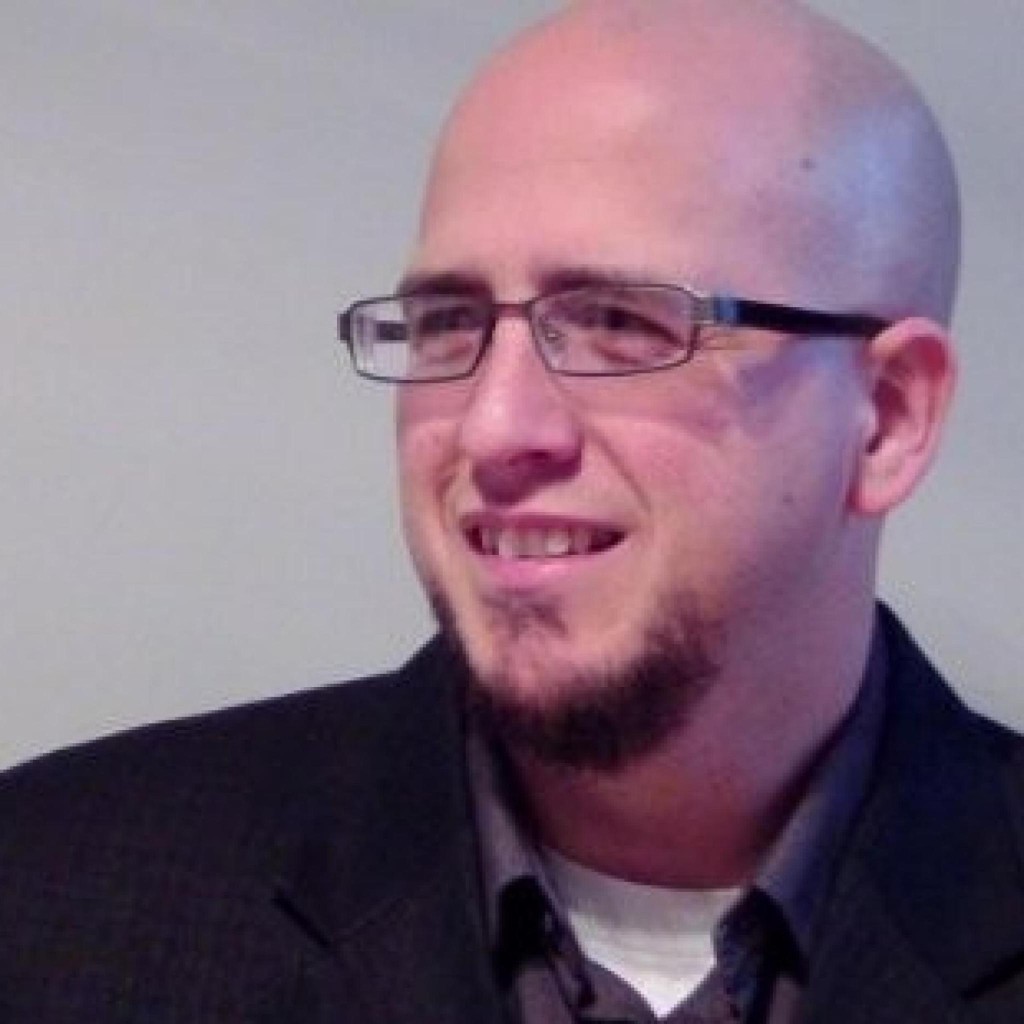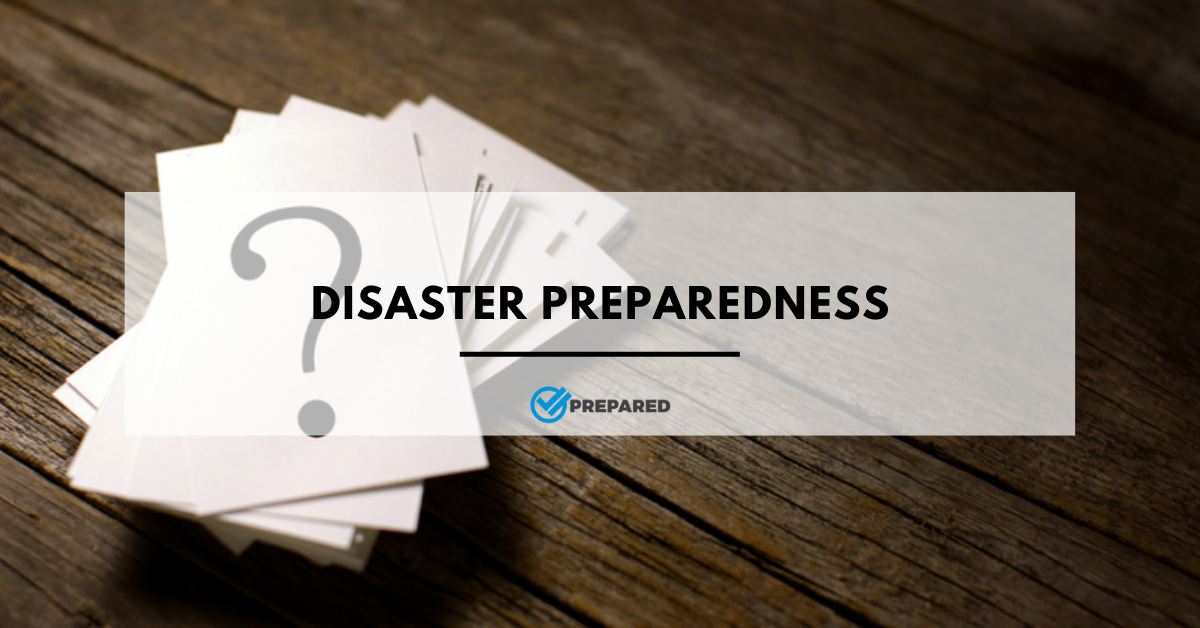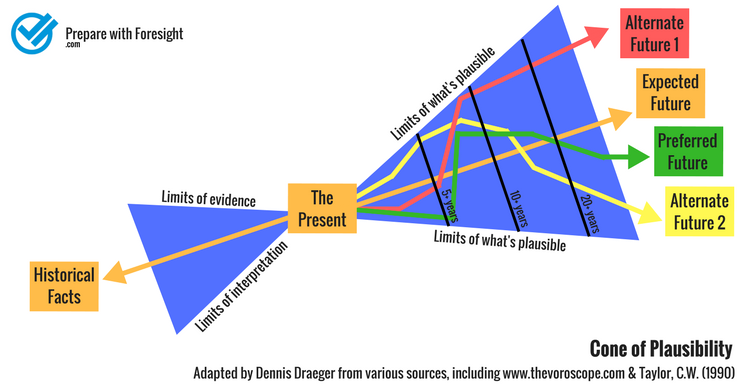Previous articles in the series addressed the concepts of implementing strategic foresight, conducting horizon scanning, imagining black swans, and mapping existing systems. Now, we’ll look at developing scenarios upon which to base strategies for disaster preparedness.
The Future is Unwritten
The most important thing to remember is that the future is unpredictable. Yes, there will be patterns and trends that may continue into the future. However, patterns and trends can always change course, and the effect they have on everything else can also change.
That’s why we develop multiple scenarios for the future. Whatever direction the future actually takes, we are more likely to be prepared for it than if we just predicted one future that will probably never occur. And that’s why strategic foresight helps with disaster preparedness. Effective scenarios can help you prepare for any contingency you can currently imagine.
Since you aren’t trying to develop government or corporate strategy, don’t try to know everything about the future. Just focus on what you do know and continue to do your horizon scanning and trend identification. The rest is more about your perspective of the future than your knowledge.
The Futures Perspective: Scenarios
From a scenario perspective, thinking about “the future” really means thinking about multiple different futures (or scenarios of the future). Therefore, it’s important to categorize your futures into different types. The most basic categories of futures are the expected future, the preferred future, and the alternative futures.
Expected Future
The first type of scenario that you should develop is your expected future. If everything in the world continued at its current rate and as you expect it to, what will the future look like in 2027? Let this scenario be a dump of all your assumptions about the world, all your expectations of the future, and many of your biases.
Our assumptions, expectations and biases shape our worldview and the way we, as individuals, experience the world and respond to it. The expected future scenario will help you understand your own worldview. If you’re going to prepare for reality, then you need to understand how you view reality and how your view differs from anyone else’s. Otherwise, you may become a victim of your own assumptions by imagining disasters that will never happen.
Preferred Future
The second type of scenario you should develop is your preferred future. If everything in the world continued in its most ideal (for you) way, what will 2027 look like? Let this scenario be a dump of all your preferences, hopes, dreams, and visions for the world and your place in it.
This scenario will help you think through your motivation. Let’s just say that you need to decide what you want to achieve in life. Defining a personal vision is like choosing a destination, and it’s okay to seek help in how to do that effectively. If you don’t have a destination already, imagine ending up where you’re currently headed. Do you even know where your life is currently heading?
Alternative Futures
Once you understand your expectations and your preferences about the future, you can begin to explore alternative views of the future. The preferred and expected futures scenarios are focused on you – your assumptions and you’re your motivations. However, the alternative futures scenarios are focused on changes existing or emerging in the world. How else might the world change in 5, 10, or even 25 years? Although you should develop your own expected and preferred futures, you can rely on someone else’s alternative futures if they differ from yours.
You can collect and create as many alternative futures as you can imagine, but that’s probably a few too many. So, just start with two or three. For these scenarios, start thinking about some of the disasters you’re already preparing for. How might those disasters play out? What would the world look like before, during, and after those disasters? How do those disasters fit into the context of the future you see from your horizon scanning?
What is Backcasting?
Backcasting is reverse forecasting. You can backcast your scenarios by tracing the steps from your futures scenarios back to the present. In other words, establish what happens in 2027. Then think about what must happen in 2026 to get to your 2027 scenario. And keep moving back to the present. The key reason for backcasting is that you are more likely to use your own assumptions if you forecast from the present.
Some of this may sound like writing science fiction, and there are similarities. If you like science fiction, you’ll feel rather comfortable doing this. For disaster preparedness, a better way to think about scenarios might be wargames such as chess or even D&D. Present yourself with a situation, and decide how you would win the game.
And it’s okay if you don’t like science fiction. However, try to explore the ideas about the future that are presented in science fiction stories. Which ideas sound plausible? How might they play out in real life regardless of how plausible they sound? How would you respond to them?
Cone of what’s plausible
Instead of thinking of time as a straight line, it’s more helpful to think of time as a cone. Even history is a little hard to see from the present. We have historical facts, but we do not know everything about history. We have archaeological evidence, but there are gaps in the evidence and gaps in our understanding of that evidence.
It’s the same for the future. We can’t see what’s actually going to happen, but we can identify and interpret the evidence at hand. Take a look at the image below to see what I mean. It may look a little academic, but as you begin to develop scenarios, it will probably make more sense to you.
Note that the line for historical facts and the line for the expected future are both straight. And on either side of these lines are gaps to the limits of evidence and interpretation for historical facts and the limits of what is plausible for the expected future. Also, the alternative futures are wavy because the actual future may not follow a straight line. In other words, the trends may change course either due to a black swan event or their own natural progression.
Resilient but Adaptable
The preferred future is also not a completely straight line in the cone of what’s plausible. You may have to adjust your preferred future course due to unexpected changes. However, such adjustments should be kept to a minimum to maintain your preferred future as a benchmark for your own life. Again, this probably all sounds academic, but as you apply scenarios to your disaster preparedness, it will begin to make sense.
Finally, your preferred future needs to become resilient and adaptable. You want to go back to your preferred future and compare it to every other scenario you create, read, or see. How is it different? How could your preferred scenario be adapted in light of another scenario? In other words, how do you achieve your preferred future in spite of disaster? How do you achieve your preferred future in a scenario where there is no disaster?
Strategic foresight is similar to situational awareness. It has to become an ‘all the time’ thing. You need to start looking at the future as if it were multiple scenarios all the time. Then you can more effectively prepare for and respond to disasters and opportunities.

Dennis Draeger is the research director for Shaping Tomorrow, https://shapingtomorrow.com/. He has over 15 years’ experience in business start-up, management and consulting. He has helped clients around the world think more effectively about the future. To see some of his other work, visit Aiglatson Foresight Research, https://aiglatsonforesight.com/.


